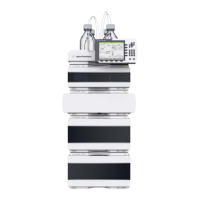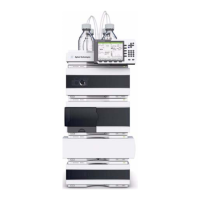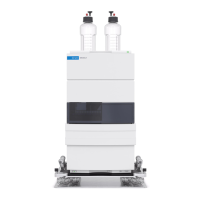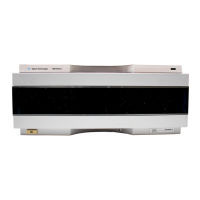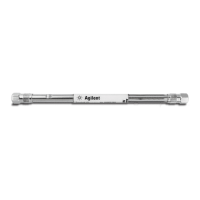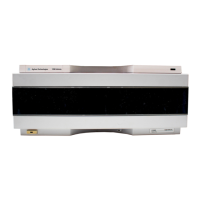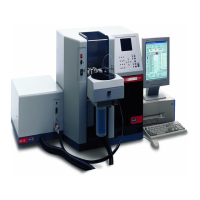16 Agilent 1100 Series LC/MSD Trap System Quick Start Guide
Tune
Tune tab provides two sets of parameters under the Smart Parameter Setting
(SPS) and the Expert Parameter Setting (EPS).
• Smart Parameter Setting—These settings let you control the ion optics and trap
accumulation as well as all supported sources. The default settings provide an
optimum signal for the positive ions of the ESI Tuning Mix (G2431A).
• Expert Parameter Setting—Because adjustments made to the Smart Parameter
Settings automatically adjust the Expert Parameter Settings, we recommend
that you complete most signal optimization procedures in the Smart view.
Optimize Use this tab to change values of the ion optics, trap drive or fragmentation voltage,
and mass product ion cutoff. For optimization beyond the SPS parameters, refer to
information on this view in the System Quick Reference Guide.
MS(n) This tab lets you enter parameters to isolate and fragment precursor ion(s), where
the number of MS levels (n) varies depending on the Trap model. AutoMS(n)
performs multiple iterations of MS/MS on a defined number of precursor ions
using generic parameters. ManualMS(n) lets you enter parameters for each
product ion. MRM (Multiple Reaction Monitoring) isolates and fragments multiple
precursor ions through one or two iterations.
Sample Info Enter information on the sample that you intend to run.
Chromatogram Use the Chromatogram tab to enter the information to monitor traces in the
Chromatogram pane. You can also enter the chromatographic trace information
when you click a line spectrum peak with the mouse maximum cursor activated.
Calibration There are two types of calibration: Automatic and manual. Automated lets you
execute algorithms to complete Scan (MS-only), Isolation, or Fragmentation
calibrations. To manually perform each calibration, you select a radio button.
Acquisition Method Editor: General Trap Parameters
Ion Charge Control (ICC) The ICC Target (or Smart Target for XCT) controls the
number of ions stored in the trap on a scan-to-scan basis. If too many ions are
stored in the trap, they interfere with each other's motions and are ejected from
the trap at the wrong instant during the scan. This results in a slight degradation
of mass assignment and resolution. Suggested values for the ICC Target are
provided with the default methods (e.g., DEF_LCMS.M).
